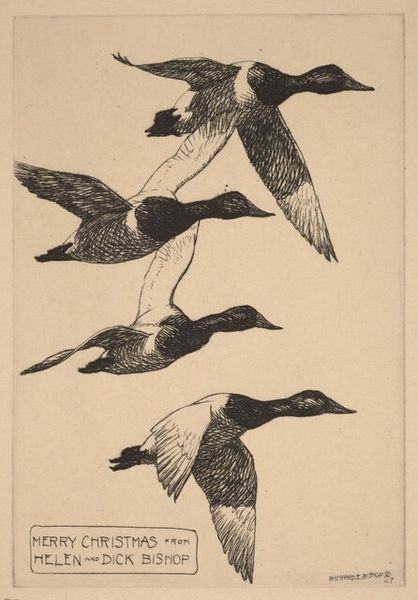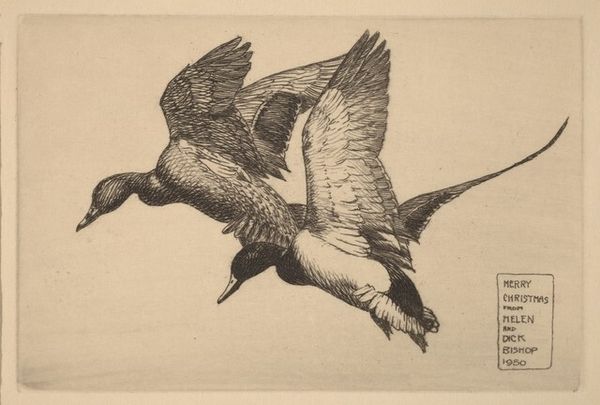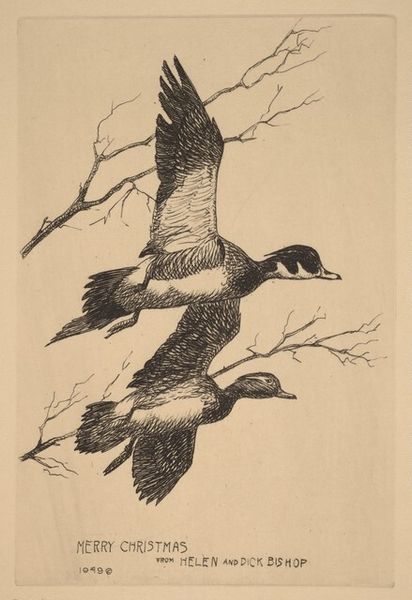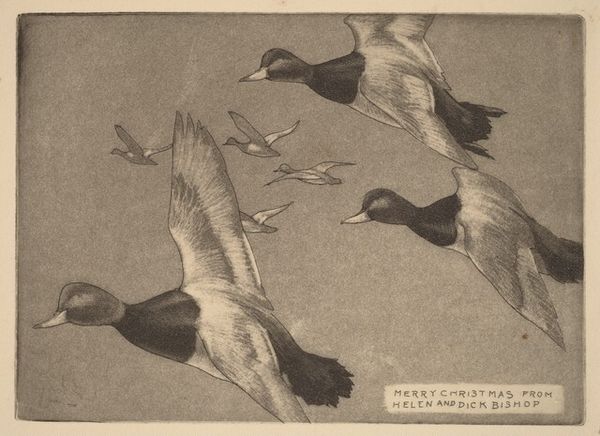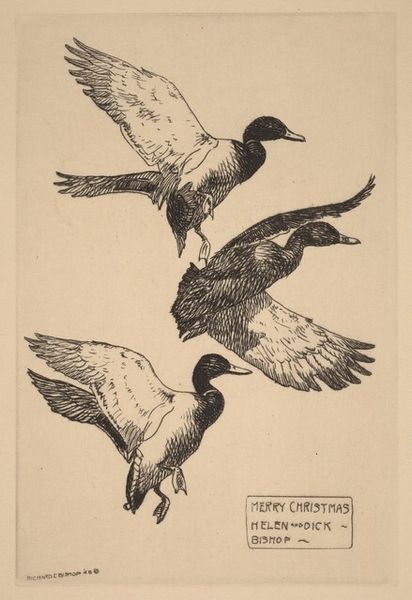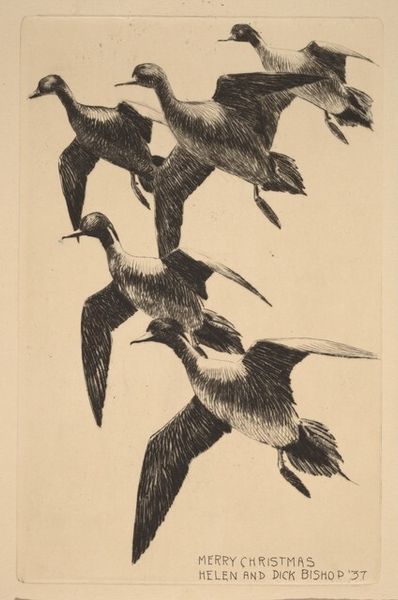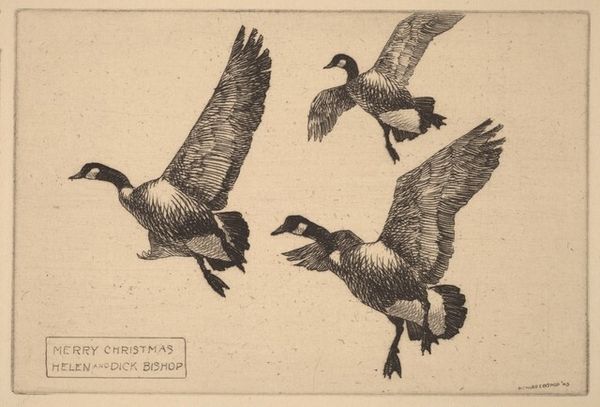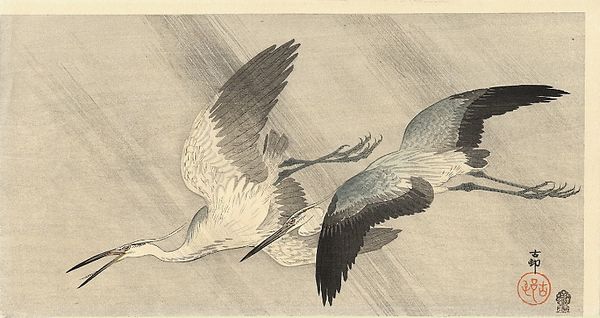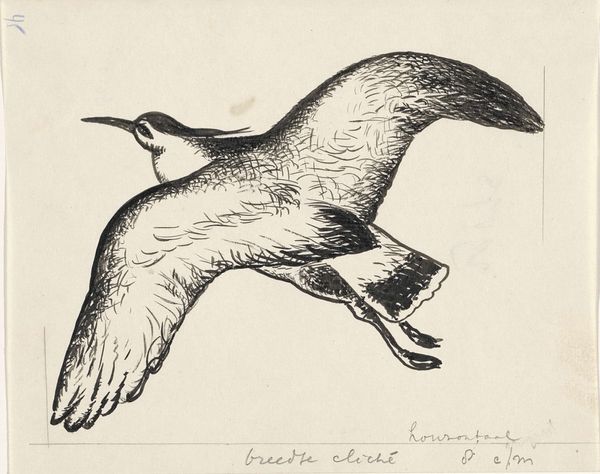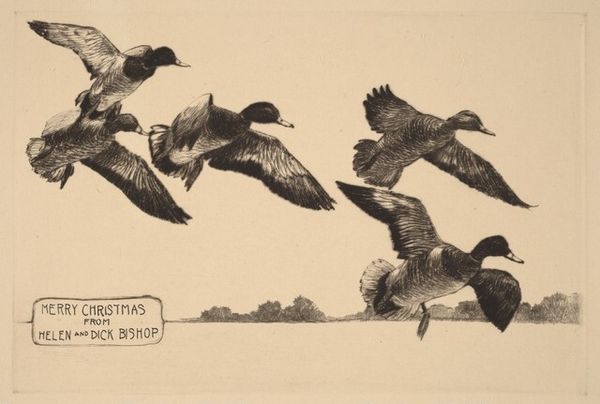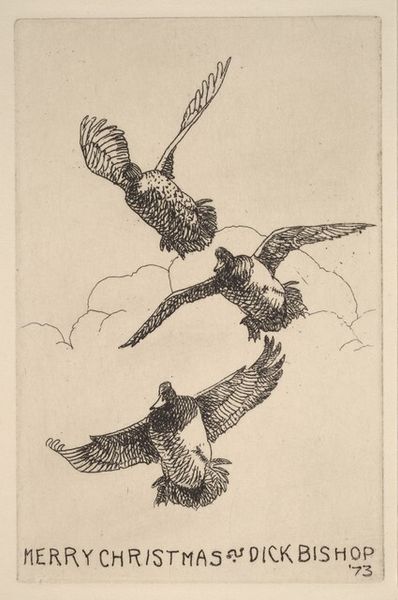
drawing, print, etching
#
drawing
# print
#
etching
#
landscape
#
figuration
Copyright: National Gallery of Art: CC0 1.0
Editor: This is a Christmas card etching from 1945 by Richard Evett Bishop, titled "Christmas Card from Helen and Dick Bishop." I’m immediately struck by its simplicity and the hopeful feeling evoked by the birds in flight, considering the context of that time period. What do you find most compelling about this piece, especially from a historical perspective? Curator: It's intriguing to consider this work within the socio-political landscape of 1945, the final year of World War II. This card speaks volumes about the yearning for peace and normalcy during and after the war, where imagery of nature often symbolizes hope and return to prosperity. Birds in flight, in particular, resonate as symbols of freedom. The decision to create a hand-made card rather than a mass produced one also implies a longing for personal connection in a time of upheaval and detachment, when many people were separated from family. Does this reading resonate with you? Editor: That absolutely makes sense. It adds a layer of depth that I hadn't considered initially. The act of sending a personalized card does speak to connection and perhaps even resistance against the dehumanizing effects of war. Does the Bishop’s artistic style tie into a larger movement or trend? Curator: Bishop's focus on wildlife reflects a broader interest in naturalism, and landscape art prominent in that era. The choice of etching as a medium, enabling multiples, indicates that artists could create "original" works that were also more accessible than painting to a wider audience. This aligns with a movement towards democratizing art and circulating imagery that promotes particular values – in this case, perhaps peace and familial bonds. What's your take on how art serves a public role during times of conflict and recovery? Editor: I see your point; it becomes a visual touchstone for shared values and aspirations. Looking at it that way, this simple card becomes quite powerful. Curator: Exactly! It’s a subtle yet potent example of how art intersects with and shapes social consciousness. We often underestimate the quiet, domestic artifacts when investigating those historical narratives. Editor: This has really changed how I view something as seemingly simple as a Christmas card. I'll definitely be looking at art with a more critical eye towards its historical and social context from now on.
Comments
No comments
Be the first to comment and join the conversation on the ultimate creative platform.
